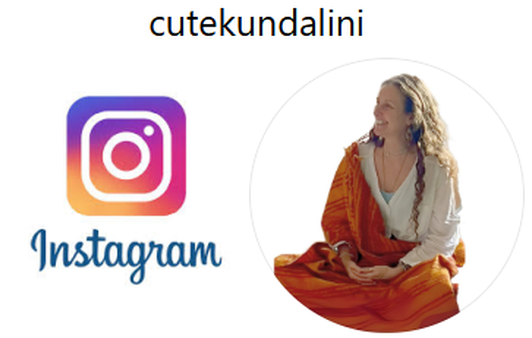- Home
- Health Related Fitness
- Styles of Yoga
Styles of Yoga
And their history & origins
| Style | Core Focus & Ancient Roots | Modern Practice Emphasis | Deepest Ancient Idea Connection | Era of Idea Origin |
|---|---|---|---|---|
| Kundalini | Energy awakening, chakra system, raising kundalini via movement, breath, sound; ancient chakra doctrine (Vedas/Upanishads/Tantra) | Chakra and energy work, kriyas, mantra, meditation | Directly emphasizes chakra system | Vedic onward (1500 BCE+); codified 20th c. |
| Hatha | Mind-body purification through postures, breath, and discipline; balancing subtle energy channels (nadis, chakras) | Static asanas, pranayama, balance, foundational for most physical yoga | Early focus on mind-body and energetic health | Upanishadic, Tantric (pre-9th c.), systematized c. 14th c. |
| Vinyasa | Linking breath and movement, sequencing for internal harmony and focus | Breath-synchronized flows, adaptability | Dynamism and breath as health tools | Movement concept: Vedic; physical practice: 20th c. |
| Ashtanga | Holistic eight-limbed path, integrating ethical, physical, energetic, and meditative practice | Fixed, athletic sequences, breath, discipline | Full-spectrum mind/body wellness, discipline | Patanjali's Yoga Sutra (200 BCE) as idea source |
| Iyengar | Precision, alignment, sequencing; physical, mental, and energetic balance using props | Static poses, focuses on safe, therapeutic alignment | Mindful embodiment, postural health | 20th c., rooted in classical Hatha |
| Yin | Long-held poses, deep connective tissue stretch, energetic channels (Chinese meridians, nadis) | Stillness, joint-tissue health, meditative awareness | Energetic subtle body via stillness | Late 20th c.; echoes Hatha/Taoist roots |
| Restorative | Relaxation, nervous system reset, healing and surrender | Supported, passive poses, meditative rest | Mind-body restoration, stress healing | Modern, based in classical Hatha |
| Bikram | Series of 26 postures done in heat; circulation, oxygen, detox | Repetition, heat for purification and flexibility | Body detox, heat for transformation | 1970s USA (with Hatha roots) |
| Power | Athletic, fitness-focused, dynamic flows | Strength, cardio, stamina | Energetic and physical empowerment | 1990s USA, evolved from Ashtanga/Vinyasa |
| Jivamukti | Integrates asana, music, ethics, devotion, and activism | Physical and spiritual integration | Wholeness, karma, and NY spirit | 1984 USA, inspired by Bhakti/Jnana yoga |
| Anusara | Heart-centered, alignment, life-affirming philosophy | Alignment, flow, spiritual themes | Tantric philosophy, heart energy | 1997 USA, integrates Tantric roots |
| Sivananda | Five-point system: asanas, breathing, relaxation, diet, positive thinking/meditation | Gentle classical yoga, comprehensive approach | Holistic health, Vedantic unity | 1950s India, pulling from ancient Vedanta |
| Forrest | Healing from trauma, intense focus on breath and core, self-empowerment | Emotional release via strong asana and breath | Mind-body healing for modern stresses | 1980s USA, modern innovation |
| Acro | Partner work, acrobatics, play, and trust | Strength, balance, social connection | New; bodily trust/collaboration | 2003 USA, draws on yoga/gymnastics |
| Hot | Yoga practiced in heated room, variation of other styles | Detox, flexibility, sweat, stamina | Transformation through heat, purification | 1970s+, variation of Hatha/Vinyasa |
| Integral | All-life integration: asana, breath, meditation, and ethical life | Full practice for mental, physical, spiritual health | Wholeness, harmony, unity | 1960s USA, from Swami Satchidananda |
| Kripalu | Self-discovery, compassion, witness consciousness | Meditation-in-motion, individualized practice | Transformation through awareness and compassion | 1980s USA, with ancient meditation focus |
| Tantra | Ritual, subtle energy, worship, chakra/alchemical transformation | Practices for energy activation, ritual, unity | Rooted in ancient chakra/energy body wisdom | Foundational, systematized 500–1200 CE |
Kundalini is the most ancient of the styles of yoga that concentrated on you, your chakras and your ultimate immersion in re-balancing your soul.
I teach Kundalini in and around Keynsham.
Come and join me - 'Lose your mind you find your soul"
Read article below for more explanation of kundalini.
Click here to see all the current classes and workshops in and around Keynsham

Quick contact: text Debi 07807460856
Chakra Balancing and Modern Yoga:
A Personal Exploration By Katey Schindler

I've been practicing yoga for over a decade now, and one thing that's always fascinated me is how different styles approach the concept of chakras. After years of experimenting with various forms—from sweaty power classes to meditative Kundalini sessions—I wanted to share what I've learned about chakra work and how it shows up (or doesn't) in today's yoga landscape.
What Got Me Into Chakra Work
Honestly, I was sceptical at first. The whole idea of energy centres seemed a bit too mystical for my taste. But after dealing with chronic stress and feeling disconnected from myself, a friend suggested I try a Kundalini class focused on the heart chakra. Something clicked that day. Whether it was the breathing techniques, the chanting, or simply taking time to focus inward, I left feeling more centered than I had in months.
The basic premise is that we have seven main energy hubs running along our spine, each connected to different aspects of our physical and emotional well-being. When these get "blocked" or imbalanced—maybe from stress, trauma, or just life's general chaos—we might feel off-kilter in various ways. Some people report physical symptoms, others notice emotional patterns or mental fog.
My Experience with Different Yoga Styles
Kundalini has been my go-to for chakra work. Every class I've attended has a specific energetic focus. We might spend 45 minutes working on the solar plexus chakra through rapid breathing and core movements, followed by meditation and mantras. It's intense but incredibly effective. The teachers really know their stuff when it comes to the subtle energy system, and they give you practical homework—specific meditations or breathing exercises to continue the work at home.
Hatha classes have surprised me with their indirect chakra benefits. While most instructors don't explicitly mention energy centers, the slow, mindful movements and extended holds naturally calm my nervous system. I've noticed that after a good hatha session, I feel more grounded and present—which, according to chakra theory, suggests my root chakra is happier.
Vinyasa and power yoga are my cardio fix, but they've also helped with energy flow in unexpected ways. All that movement and synchronized breathing seems to shake things loose energetically. I don't think about chakras during these classes, but I often leave feeling like stuck energy has been moved around.
Yin yoga deserves special mention here. Holding poses for several minutes while breathing deeply has this amazing way of helping me process emotions. Some of my yin teachers will mention which chakra each pose is supposed to target, but even when they don't, I find these practices deeply healing on a subtle level.
I've tried Iyengar a few times, and while the precision and alignment focus doesn't explicitly address chakras, there's something about the methodical approach that creates a strong mind-body connection. It's like tuning an instrument, everything feels more harmonized afterward.
The hot yoga and Bikram classes I've attended are purely physical challenges for me. Great for detoxing and building stamina, but I don't really connect with any subtle energy work in the 105-degree heat. Same goes for acro yoga—super fun and playful, but my attention is entirely on not falling on my face!
What I've Learned About the Physical Differences
The physical demands vary wildly between styles. Kundalini can be surprisingly challenging—try holding your arms up while doing breath of fire for three minutes!—but it's a different kind of effort than cranking out chaturangas in a power class. The Kundalini movements are repetitive and specifically designed to stimulate certain energy pathways, especially along the spine.
Traditional styles like Hatha and Iyengar build strength and flexibility gradually through precise alignment. Vinyasa and power classes are more like athletic training—you'll definitely work up a sweat and build muscle. Yin and restorative are gentle on the body but can be emotionally intense as you hold space for whatever comes up.
Why I Keep Coming Back to This Work
After years of practice, I'm convinced that working with the chakra system—whether explicitly or implicitly—offers something that purely physical exercise doesn't. It's helped me understand my own patterns better.
Why do I shut down when I'm stressed? (Hello, throat chakra issues.) Why do I struggle with self-confidence in certain situations? (Solar plexus work needed.)
This isn't about believing in any particular spiritual system. For me, it's about using an ancient framework for self-awareness that happens to be incredibly practical. The physical practices, breathing techniques, and meditative elements all work together to create positive changes that I can actually feel in my daily life.
Whether you're drawn to the full Kundalini experience or prefer to explore subtle energy through gentler styles, there are plenty of entry points. The most important thing I've learned? Trust your own experience over anyone else's theory, including mine.
- Home
- Health Related Fitness
- Styles of Yoga
